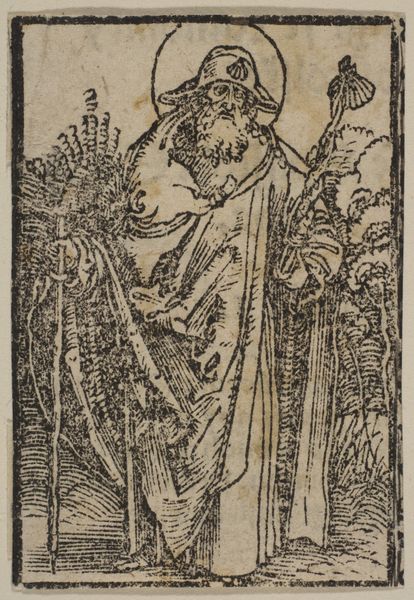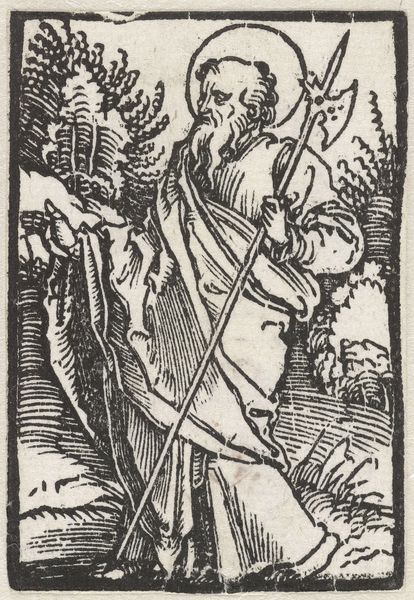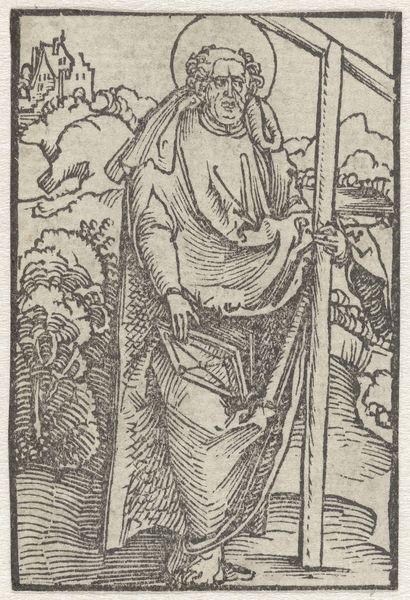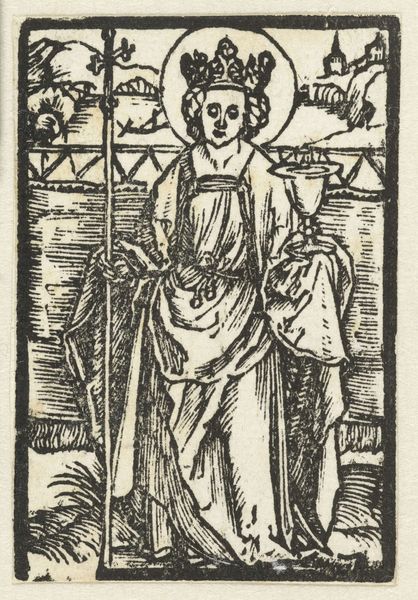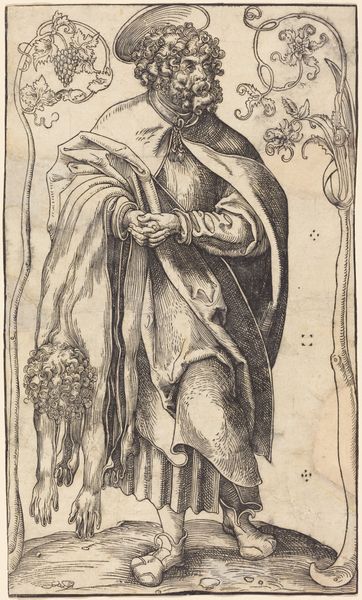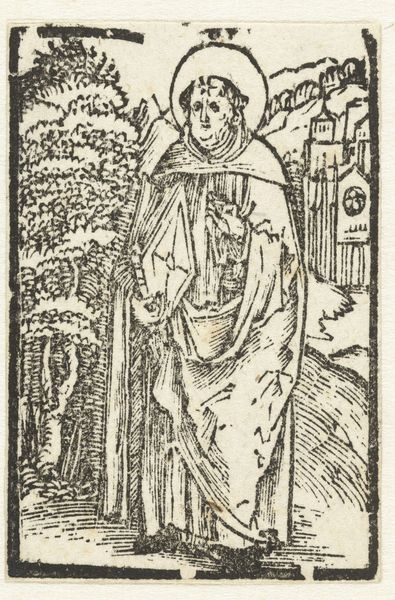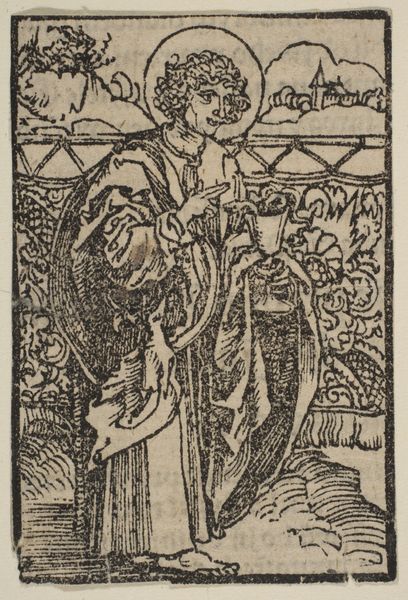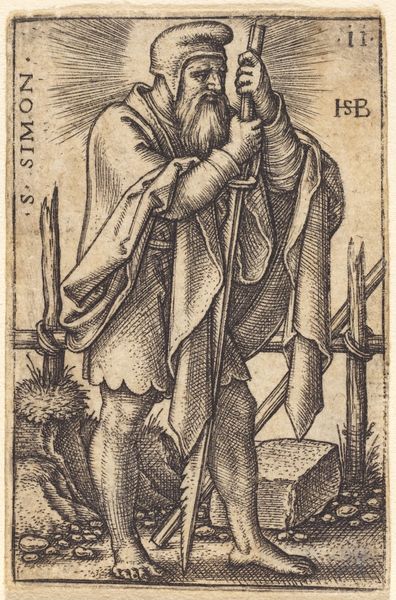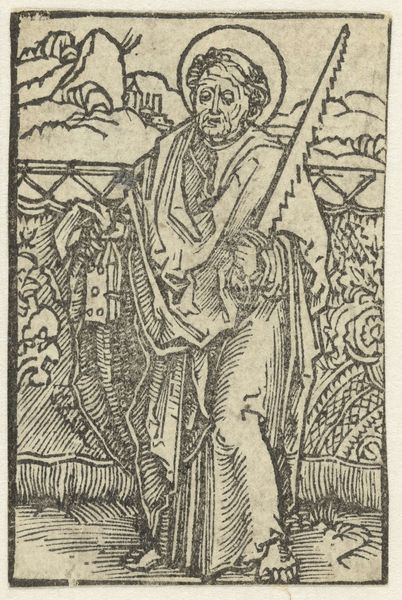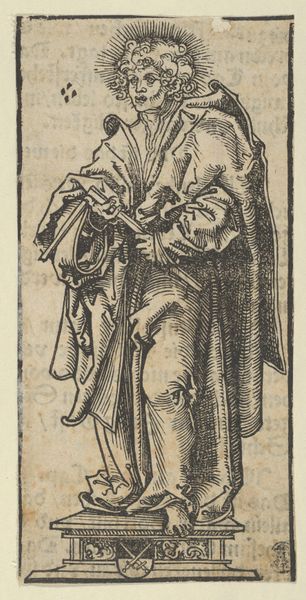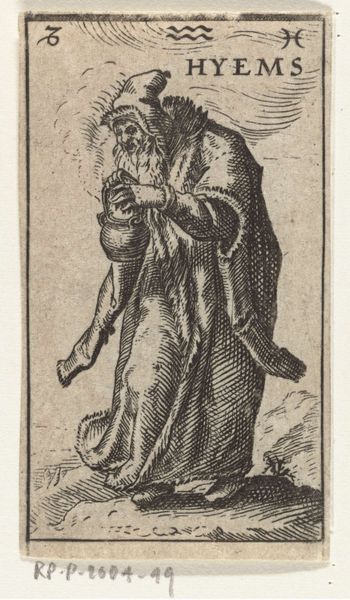
print, woodcut
#
portrait
# print
#
figuration
#
woodcut
#
line
#
history-painting
#
northern-renaissance
Dimensions: height 62 mm, width 41 mm
Copyright: Rijks Museum: Open Domain
Editor: This woodcut, "Apostle James the Greater" by Albrecht Dürer from 1503, is incredibly detailed, especially given its age and medium. He looks a bit like a kindly wanderer. What can you tell me about the significance of his depiction? Curator: Notice how Dürer uses line. Not just to create form, but also texture and shadow. The Apostle, holding a staff with a scallop shell, emblem of pilgrimage, embodies journey, faith, and transformation. He's less an individual and more a carrier of cultural memory. The scallop shell is key—can you tell me where you've seen it before? Editor: Isn’t it associated with the pilgrimage to Santiago de Compostela? Curator: Exactly! It's an invitation. The apostle, identified by the shell, beckons us toward self-discovery through the challenging physical and spiritual journey. Pilgrimages were transformational journeys. Consider how that symbolism might resonate with contemporary ideas about identity and belonging. Editor: So the image itself acts like a symbol, encouraging continued cultural practices. Curator: Indeed. It perpetuates both literal and metaphorical journeys, embedding them in cultural understanding and prompting introspection. Every element is charged with symbolism. His hat? The foliage? Editor: Seeing the connections you've drawn between the imagery and cultural significance really opens my eyes to layers I wouldn’t have recognized on my own. Curator: Visual symbols become incredibly potent through sustained cultural relevance; this image stands testament.
Comments
No comments
Be the first to comment and join the conversation on the ultimate creative platform.



